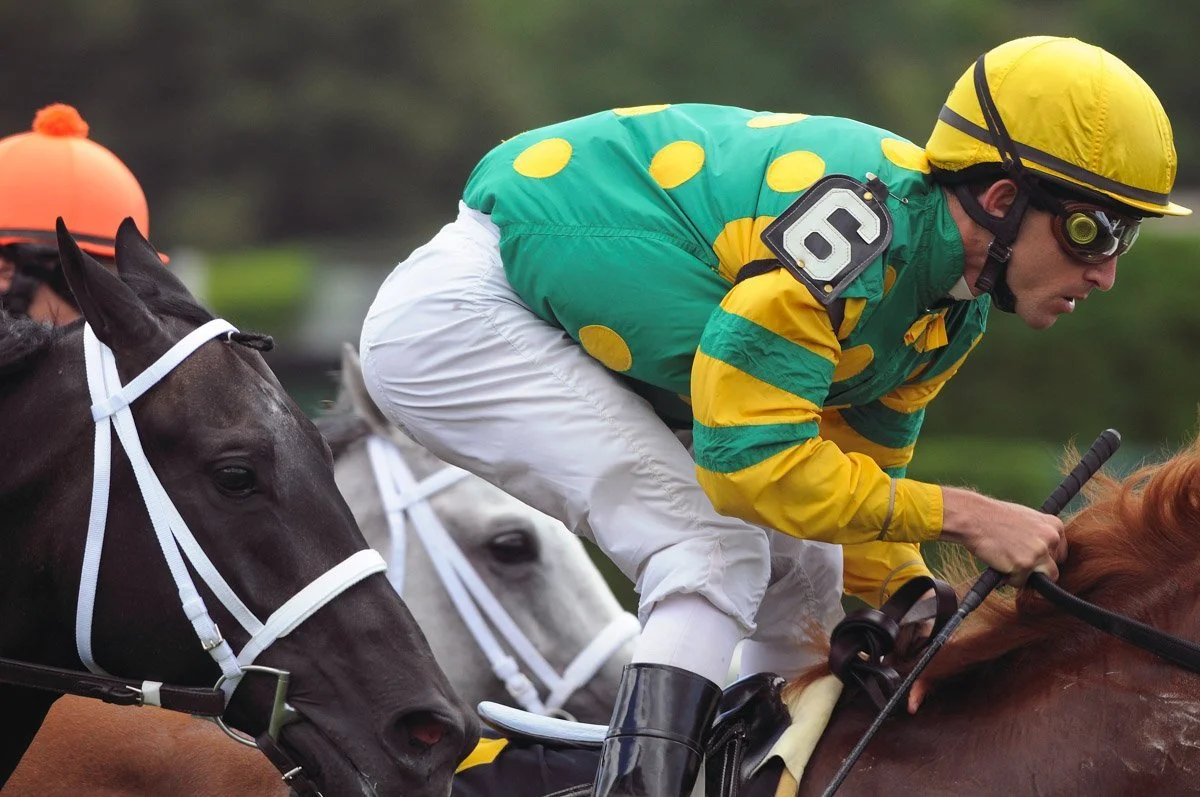Three Weeks in August (2008-2010)
Life at Saratoga Race Course is a throwback to an earlier era. One of the oldest tracks in the United States, both the rituals of racing and the track itself have changed very little in the past 152 years. Originally opened in 1863, the track is nestled in the town of Saratoga Springs, New York, where the grounds in summer are bathed in dusty sunlight occasionally interrupted by lightning storms that sweep through the mountains with incredible speed and intensity.
For many years horse racing has been losing much of its popularity. When it is possible to bet on six hands of internet poker at once, the idea of waiting 26 minutes between races to watch a 90-second sprint has lost its appeal, and tracks all across the country are disappearing. Many smaller tracks try to get permission to add a casino to bring in more crowds, but if that fails they are often forced to close their doors.
But Saratoga Race Course survives and flourishes. It has the ability to attract not just horseracing enthusiasts and gamblers but also families, college students, and the general public. The racing experience at Saratoga resembles a picturesque time long past, in a town that caters to tourists and horse lovers.
Before dawn the rituals of Saratoga begin. Horses are washed, groomed, fed, and walked. The pace is slow and methodical, as it has always been. The early birds come to eat breakfast at the Clubhouse and watch the horses exercise around the track.
Later in the morning the big crowds begin to arrive. Many of the casual spectators bring coolers and find a spot at the picnic area to watch the races on the video monitors, while others take up seats in the grandstand and begin to place their bets. Some wander near the paddock and taste the mineral waters of The Big Red Spring, which was named after Secretariat and Man O’War, the two chestnut-colored champions who were both referred to as “Big Red.” The waters of the spring are said to have healing powers that have lured visitors since Native American times. The aristocracy of the racing world is there too. The men dressed in suits, the women wearing fanciful hats, eating at the trackside restaurants, and wandering the paddock viewing the horses that they own.
Exactly seventeen minutes prior to post time for each race, a hand-rung bell calls the jockeys to the paddock. After saddling their mounts, the horses and jockeys make their way single-file through the crowd. The bugler plays First Call and the horses are led into the starting gate.
And then the front gates release, the buzzer sounds, and the horses are off. As they gallop counterclockwise around the 1 1⁄8th mile outer dirt track or on one of two inner turf tracks, an ambulance follows a short distance behind, just in case there is an accident. The track announcer gives continuous race updates, and when the horses cross the finish line and the winner is announced, the crowd cheers or moans, and the order of the winning horses and their payoffs are posted on the tote board. The winners flock to the betting windows to collect, while the losers rip apart their betting slips and discard the pieces unceremoniously onto the ground.
As the races end the crowd files out, and the horses settle into their stalls. In early August, as the light begins to dim, the horse auctions begin at Fasig-Tipton, the oldest auction company of its kind in North America, which began selling horses at Saratoga in 1917. Day turns into night. And before the sun rises the next morning, for six weeks every summer, it all begins again.
For a total of three weeks in August, during the summers of 2008 and 2009, and on a Yaddo artist residency grant in 2010, I photographed the world of thoroughbred horse racing at Saratoga Race Course. I would awake before dawn each morning, arrive at the track while it was still dark, and stay through the last races, photographing all aspects of the “Sport of Kings”.
It was a magical three weeks; and if I listen closely, I can still hear the buzz of the crowd, the sound of the bugle, the call of the track announcer, and the hoof beats of the horses as they round the track.
(For image data, click thumbnail and hover cursor over enlarged photographs)






























